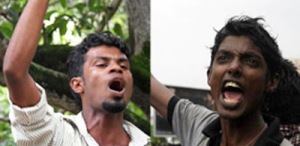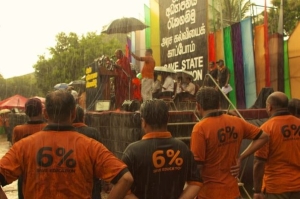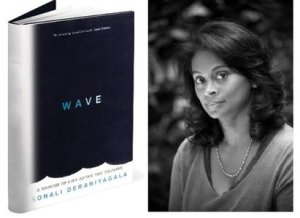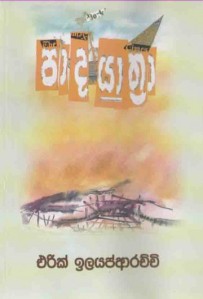Shazia Omar’s Like a Diamond In the Sky launches like a hot air balloon, but the air runs out midway over teeming metropolitan Dhaka, Bangladesh. The few reviews of the book available in the open media do no justice to the writer or the book, as they gloat over the tangibly contrived narrative of an out-of-sorts Deen’s drug culture and drug addiction. The story fails to convince, begs for a more palpable reading of society and societal relations along class lines, while it demonstrates the writer’s misplaced will of wanting to fabricate a story of youth, love and drugs.
Like a Diamond In the Sky is, indeed, like a diamond in the sky: it is illusive as it is badly put together: a fairytale patched up with a popular romance script for guidance. Omar’s is however, an extension to a growing corpus of Asian / Asian-related writers discoursing on narcotic culture. A name that comes to mind is Jeet Thayil, whose Narcopolis (2012) takes us through the nooks and corners of 1970s Old Bombay. Mark Wilde, writing from Sri Lanka, submits in Chucking the Dragon (2009) the subterranean face of urban and suburban peddlers and pushers; the complexity of youth, relationship and love consumed in drag. Omar’s, however, is a novel that floats on surfaces – a novel that doesn’t cut deep enough, either into the personal or the social. Hers is a series of moments and motions lacking intensity or conviction.
As a reader, I need conviction that Deen’s life is in chaos and disarray. The writer insisting me that his is, every other page and paragraph, for me, is scant detail and unacceptable patronage. The childish quarrels Deen has at home – and the offhand ease with which he “disappears” from the clutch of who seems like a deeply devoted and concerned mother – and the no-questions-asked manner in which he moves into an apartment with Maria fails to leave an impression. Maria, who lives in a single apartment, readily welcomes Deen into her bed, even though it is clearly hinted that they are quite short of being mere marginal acquaintances at College. The easy fusion denies Maria a critical-minded, cautionary, far thinking personality; though, in every other instance Omar promises us that Maria is a sharp, non-bimbo type.
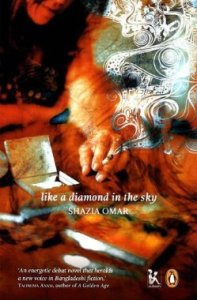 Deen’s “personality” at school seems to have been borrowed and plastered from a popular cinema reel. He is the type who hangs at canteens, drinking canteen chai, making eyes at passing girls: quite the “common guy” on campus. His first meeting with Maria, too, is a borrowing from popular cinema, where the inevitable bumping into each other is followed by the picking up for the girl her books and so on. Shazia Omar, for some reason, bites the end of her pencils to draw a realistic picture of an Asian University Campus; but, the efforts are even worse rewarded when she takes a crack at brining to life the entertainment halls of the local drug baron and the brothels (with benevolent prostitutes).
Deen’s “personality” at school seems to have been borrowed and plastered from a popular cinema reel. He is the type who hangs at canteens, drinking canteen chai, making eyes at passing girls: quite the “common guy” on campus. His first meeting with Maria, too, is a borrowing from popular cinema, where the inevitable bumping into each other is followed by the picking up for the girl her books and so on. Shazia Omar, for some reason, bites the end of her pencils to draw a realistic picture of an Asian University Campus; but, the efforts are even worse rewarded when she takes a crack at brining to life the entertainment halls of the local drug baron and the brothels (with benevolent prostitutes).
Once again, the aspect of class – and the relatively rigid class boundaries that operate in the Third World – is evicted from Omar’s creative formula. Deen – though out of sorts after his doctor-father’s death – is seen in the company of Falani and the dingy streets of illicit purchases. He is in the heart of brawls and beat ups, moving about the quarter that dwells on “natural justice”, facing the odds of the street with his friend AJ and, later, Parvez. The ease with which Deen permeates from one ethos to the other – the middle class universe to the street of the street-wise – is too easy and too clumsy.
Expatriate writer Karen Roberts – an émigré Sri Lanka born resident of the US (?)periodically writing of “Lankan reality” – in her 2010 novel The Lament of the Dhobi Woman narrates a section where her heroine Catrina is smoking marijuana in the suburbs of Colombo. She, from an elite Colombo neighbourhood and from an upend family, is seen sitting in an open dump, dragging away with fellow consumers who, we’re told, are from the impoverished quarter of the city. She claims that who she is or where she is from is not important to her fellow draggers; for, what binds them together is their addiction and need.
 For a resident Lankan reader Roberts’ delivery is nothing more than an eyebrow-raiser as it is not a part of Lankan suburban culture to have such secluded dumps where drug pushers and users inter-mingle outside the parameters of class. Drug consumption in Lanka is essentially a classed discourse: a dimension which, I feel, Mark Wilde captures with effect in Chucking the Dragon. Shazia Omar also fails to make her delivery three-dimensional: it lacks the resonance a work would echo when hinged on a close contextualized reading of class, society and their complex interplay.
For a resident Lankan reader Roberts’ delivery is nothing more than an eyebrow-raiser as it is not a part of Lankan suburban culture to have such secluded dumps where drug pushers and users inter-mingle outside the parameters of class. Drug consumption in Lanka is essentially a classed discourse: a dimension which, I feel, Mark Wilde captures with effect in Chucking the Dragon. Shazia Omar also fails to make her delivery three-dimensional: it lacks the resonance a work would echo when hinged on a close contextualized reading of class, society and their complex interplay.
The novel ends with a whimper, as it rounds off as a prescription against all users of narcotics. Deen is both disappointed and futilely stripped of his dreams and hopes for life. His tragic end – an abrupt termination of a young life that (as implied) would have blossomed for the better – is the final card played to the audience: a cathartic sympathy campaign against psychedelic usage. Throughout the novel, the irredeemable and phony view of the Street from the class-elite, class-superior bastion – through the reeking stench of its fake morality and hypocrisy – works as a drawback. In the end, the novel implodes unto itself as a schoolmistress’ commandment of how to be a good boy and thrive.
“An energetic debut novel that heralds a new voice in Bangladeshi fiction” says Tahmima Anam. Jessica Mudditt concedes that the novel demonstrates “all the rigour you would expect of someone who has spent a month in a rehab centre studying dependence” (italics mine). Whether the implication here is that Omar actively researched on drug addiction in a rehab center is vague to me. But, if it is indeed the case, a better novel would have been possible had Omar begun her “research” with a month or so on the Dhaka streets. Such a novel would have, perhaps, elicited a less slavish, less ignorant claim from an energy-conscious Anam.

